| Devin Bee |
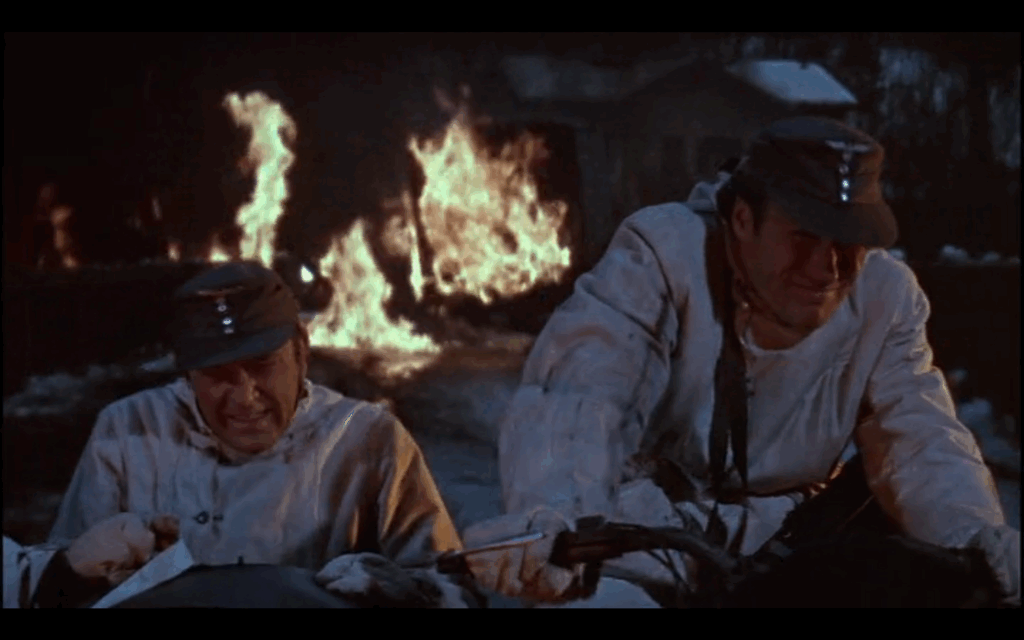
Where Eagles Dare plays at the Trylon Cinema from Sunday, August 3rd, through Tuesday, August 5th. For tickets, showtimes, and other series information, visit trylon.org.
Where Eagles Dare is a film of clashes. The story sounds simple enough: during World War II, an American general is held captive by Nazis in a Bavarian castle. An elite squad of Allied soldiers—six British and one American—are tasked with infiltrating the castle and saving the general before the Nazis can extract sensitive information. We learn, however, that little of this accurately describes the absurdly convoluted plan concocted by British intelligence. This intrusion of unnecessary complication is but one of many misfit parts that collide across the film’s hefty runtime. Where Eagles Dare is chockablock with dissonances: propulsive action welded to standstill exposition, the inconsistent means of conveying that characters are speaking German, Allies dressed as Nazis, intrusions of awkward or careless filmmaking and storytelling (my favorite perhaps being when no effort is made to hide the faces of stunt doubles), the curiously light tone of the movie and its characters amid constant life-and-death stakes and near impossible odds. These all contribute to an endearingly shaggy texture for a film that could have been a bog-standard actioner. But one contradiction stands alone as the sun around which everything else revolves: the clash of acting styles between Clint Eastwood and Richard Burton.
It’s hard to think of a more awkward match. Burton, the Welshman, the powerhouse Shakespearean with the dulcet voice and musical elocution. A performer of impeccable precision, able to convey the motion of thought with a brief pause and a flicker in the eyes, some activity with the hands. He can swing suddenly between disparate emotions—bantering insouciantly one moment; enraged, voice humming with electricity the next. He is a capital-A Actor.
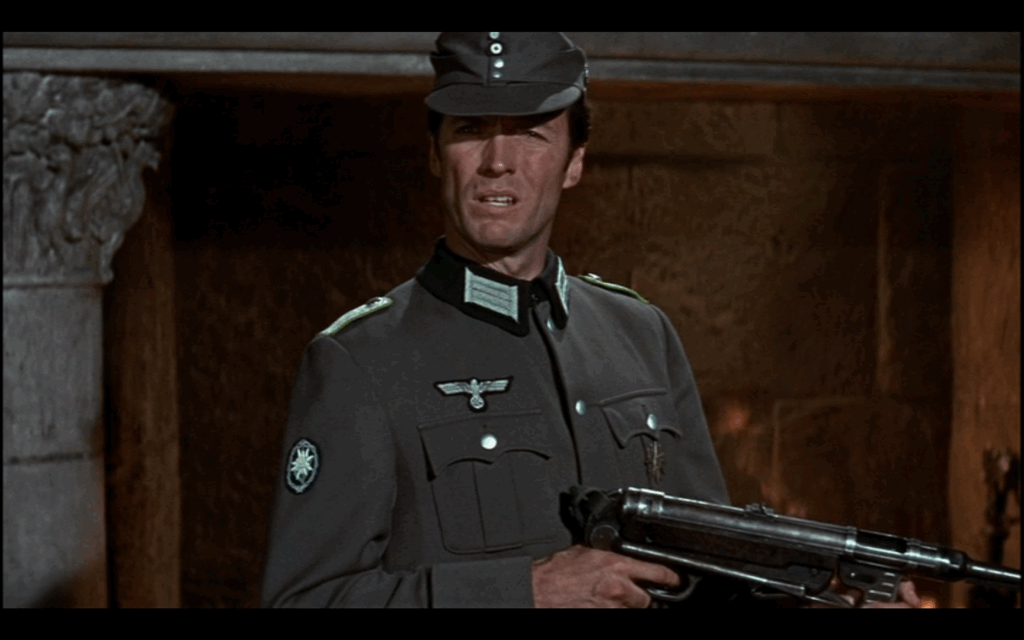
Eastwood, in contrast, is more icon than actor. He understands his limitations and works savvily within a narrow range of gestures. The squint is his most famous and trusted move. But he also possesses a magnetic, cocksure smirk, and no actor better evinces bewilderment. Using minimal tools, he has crafted a screen persona that embodies a certain ideal of American masculinity: rugged and unrefined, mutedly intelligent, taciturn, handsome but not pretty, confident verging on cocky, and willing and able to assert one’s autonomy against resistance—with violence, if necessary. His genius as a performer resides not in technical skill but rather sheer force of presence—the way he instantly commands attention and establishes his persona within a given context.
The contrast between Eastwood and Burton demonstrates that good acting does not exist in a vacuum. While it may be laughable to imagine Eastwood doing Shakespeare or replacing Burton in Who’s Afraid of Virginia Woolf?, it’s equally absurd to image Burton as the Man with No Name or “Dirty” Harry Callahan. The meaningful distinction between them is one of style rather than grade.
About Where Eagles Dare, the critic Dave Kehr wrote, “you have to admire any film that casts Clint Eastwood opposite Richard Burton; the real violence is in the clash of acting styles.” It’s a pithy, funny line, and it captures the challenge assumed by director Brian G. Hutton. But what’s most admirable is how cleverly Hutton integrates the divergent acting styles of his leads into the film’s design.
First, at the level of story, opposition is an essential component. Eastwood plays Shaffer, the only American on an otherwise British team of commandos. The Brits are all familiar with each other, but they know nothing about Shaffer, nor he about them. As a stranger and an American, Shaffer is an outsider. He should stand apart. Casting any actor with a distinct bearing to play Shaffer would be a smart dramatic choice. Eastwood’s particular brand of reticence and aloofness, along with his six-foot-four frame (he’s noticeably taller than his British counterparts), is particularly canny.
Burton plays Smith, the team’s leader. His confidence, supreme ease of manner, and facility with speech fit a character described as Britain’s “best agent,” possessing a “sixth, seventh, and eighth” sense. What’s more, Smith—as part of a reckless and incoherent plan—is the only agent in the field who knows the details of the actual mission. It’s appropriate the he’d have a theatrical demeanor; from a privileged position of knowledge, he’s essentially playing a variety of roles that change depending on his audience and the latter’s evolving understanding of the truth.
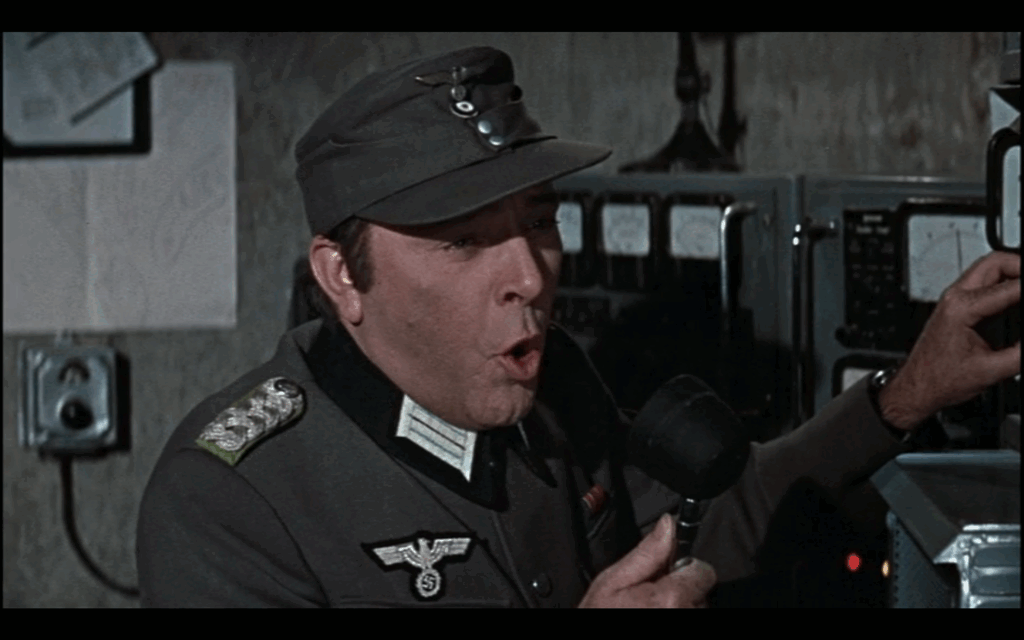
Hutton also structures the film to play to each lead’s strengths in turn. Where Eagles Dare is essentially two films welded together. There’s the stealth infiltration of the Nazi castle that forms roughly the first 90 minutes. This section is dialogue-heavy, and Richard Burton dominates. He banters, dissembles, flirts with female colleagues, gives instructions, delivers lengthy blocks of exposition, and, most memorably, when radioing his superiors, repeatedly intones the phrase “Broadsword calling Danny Boy”—the assonant words music when borne by Burton’s voice.
And then there’s the blowout-action slaughterhouse that forms the final hour. Eastwood takes the helm, unleashing mayhem on every Nazi in his vicinity. He stabs them with a knife. He shoots them with little guns. He shoots them with big guns. He shoots them with two big guns at the same time. He picks up an active grenade and returns it to sender. He blows shit up—cars, helicopters, planes, buildings, trees. So many explosions! (Where Eagles Dare is part of a fine lineage of movies in which even mild body damage to vehicles will cause fiery detonations). Eastwood is in his element, squinting and scowling and swaggering through it all. The amount of carnage is staggering: Eastwood kills more people on screen in Where Eagles Dare than in any other movie in his bloody corpus.
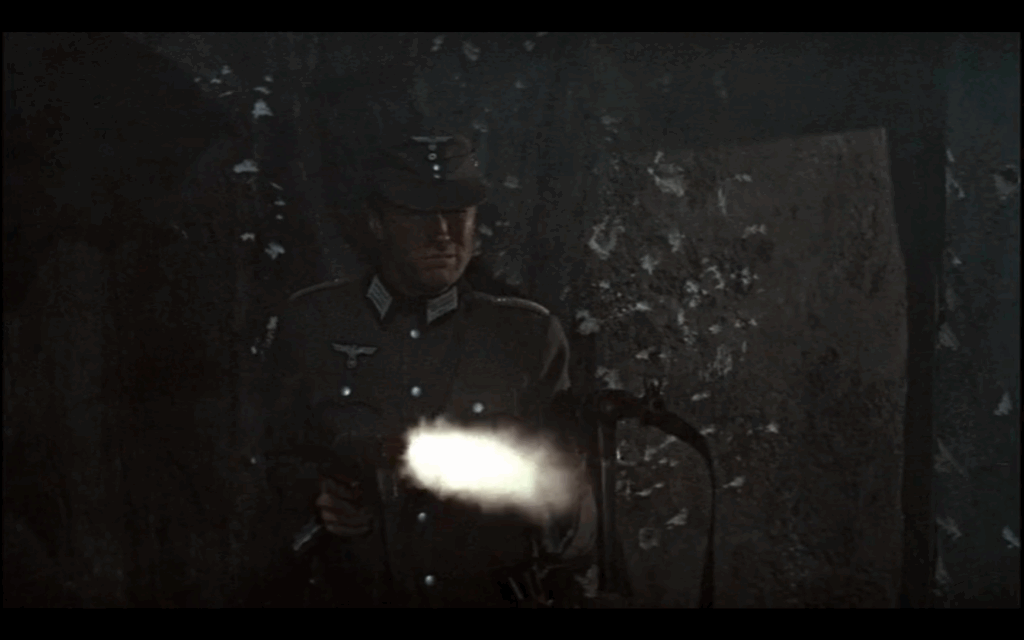
Equally interesting is what each actor is not doing when compared to his co-lead. Eastwood may specialize in laconic performances, but his speaking load in Where Eagles Dare is conspicuously small considering the film’s length and his prominent role. Twelve minutes pass before he utters his first word, and I’d wager that the entirety of his dialogue could fit on one side of a bar napkin. Eastwood had more lines in the script but was not interested in speaking most of them. So he kept giving them away to Burton, who was happy to oblige. The dialogue he does have is spare and perfunctory. In the lead-up to the film’s more lively section, he mostly observes in silence, flashing that exquisite look of befuddlement at opportune times. Early in the proceedings, Shaffer says to Smith, “I don’t even know why the hell I’m here.” You’d be forgiven for thinking Eastwood had broken character to opine on much of the Burton-led section.
Burton, for his part, cedes almost all of the action to Eastwood and keeps his own physical exertion to an absolute minimum. Beyond the prodigious exercising of his tongue and lower jaw, he does little more rigorous than walk at a brisk pace. This isn’t merely a case of downplaying acting limitations. Burton was guzzling four bottles of vodka a day during the shoot. He was so drunk on set, he’d often have difficulty doing anything remotely athletic, at one point walking headfirst into part of the set and knocking himself unconscious. A fun game to play while watching is to see whether you can spot an instance of Smith running where Burton’s face is visible (I was unable to). Knowing this, you can fully appreciate Burton’s near-superhuman ability to speak with eloquence. Not once during his reams of dialogue is there the slightest hint that he’s exploring the frontier of human drunkenness. What an actor!
The boundary separating each actor from his counterpart’s bailiwick does sometimes falter, and this provides moments of delectable awkwardness. Twice, Eastwood has the drop on an enemy and seems primed to rip off a tasty quip before the kill. Both times he politely says “hello,” and then casually blows him to Hell. You can easily imagine the same line falling off Burton’s lips with maximum verve and relish. Eastwood is also given a single opportunity to banter with Burton. Smith enters a room to find that Shaffer has swiftly dispatched two Nazis. “Well, that was quick,” Burton says with some nip. Eastwood rushes his response—“Fear lent them wings, as the saying goes”—with the enthusiasm of a teenage boy forced to attend his sister’s band concert.
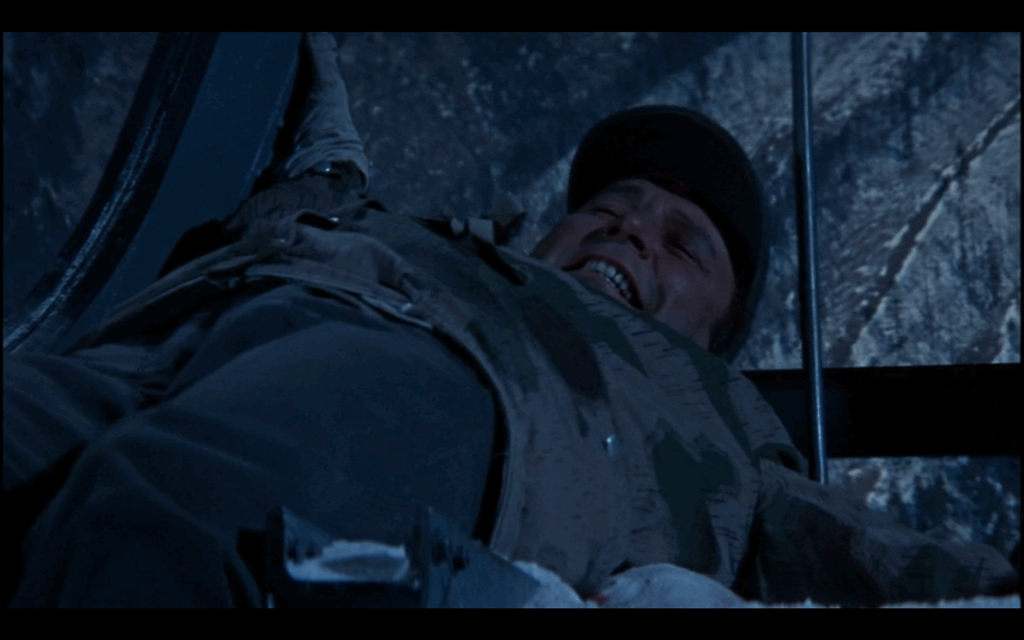
Burton’s few forays into action likewise prove clumsy. When shot in the hand, he says, “Damn it! Blast it!” in the tenor of someone frustrated that they were beaten to a good parking spot. His lone action set-piece—a one-on-two battle atop a cable car—essentially consists of him writhing around on his back for several minutes with a squinched up face. He also holds his pistol like it’s a dead fish and looks as natural shooting a machine gun as he would attempting to swallow it whole. The man does look uncommonly poised driving a red-and-white bus in a high-pressure situation though. So, credit where it’s due.
The Eastwood-Burton pairing is an emulsion: the forced combination of immiscible parts. The film’s chief source of suspense and much of its pleasure derive from noticing the efforts to maintain and stabilize this mixture, watching it hover on the verge of separation, occasionally crossing the threshold into full disjuncture. It shouldn’t work. And yet it does. Like Smith and Shaffer’s mission, the pairing defies the odds and succeeds in ludicrous fashion, as does the movie that contains it. It’s a minor miracle—as unlikely as wrens making prey where eagles dare not perch.
Edited by Olga Tchepikova-Treon
